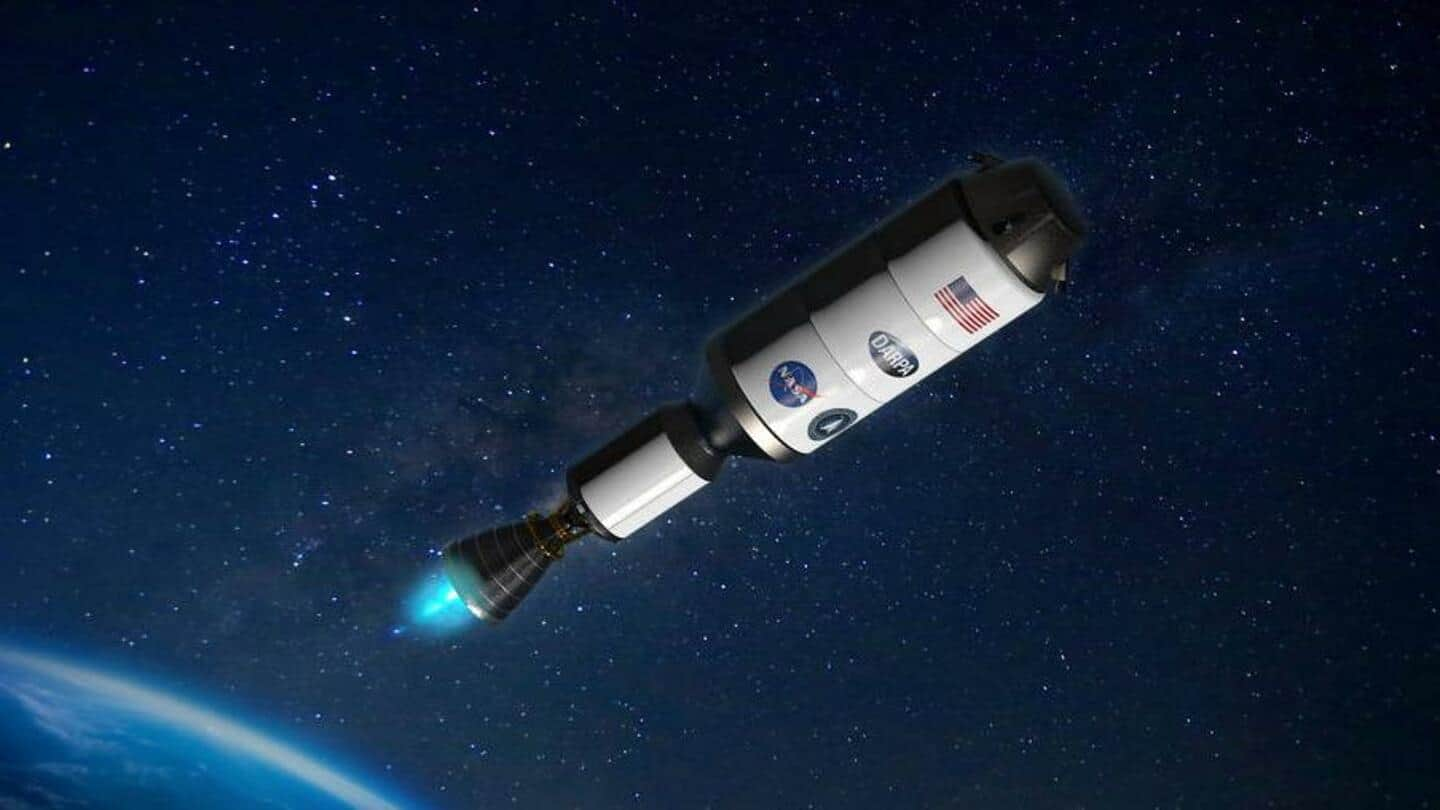
NASA to test nuclear-powered engine for future Mars missions
What's the story
NASA is planning to test nuclear-powered spacecraft that could, one day, support crewed missions to Mars. It intends to do so "as soon as 2027." The space agency has partnered with the Defense Advanced Research Projects Agency (DARPA) to "develop and demonstrate advanced nuclear thermal propulsion technology." A nuclear thermal rocket would allow faster travel and ultimately reduce the risks posed to astronauts.
Context
Why does this story matter?
With the help of nuclear-powered engines, astronauts will be able to travel to and from deep space "faster than ever" and that is something that can pave the way for crewed missions to the red planet sometime in the future. Reducing transit time is vital, especially when it comes to crewed missions since longer trips would require more supplies and more powerful systems.
Details
How does a nuclear thermal engine work?
"In a nuclear thermal rocket engine, a fission reactor is used to generate extremely high temperatures," explained NASA via a blog post. "The engine transfers the heat produced by the reactor to a liquid propellant, which is expanded and exhausted through a nozzle to propel the spacecraft." Nuclear thermal rockets can beat conventional chemical propulsion systems in efficiency by three or more times.
Information
Nuclear-powered systems offer advantages like increased payload capacity
Benefits of nuclear-powered systems include increased capacity for science payloads and higher power for instrumentation and communication. Talking about the collaboration, NASA's Space Technology Mission Directorate (STMD) will head the technical development of the nuclear thermal engine which will be integrated with DARPA's experimental spacecraft.
Collab
DARPA will be responsible for the overall program
DARPA will be responsible for the overall program which includes rocket systems integration and procurement, approvals, scheduling, security, and ensuring overall assembly and integration of the engine with the spacecraft. During the course of the development, NASA and DARPA will work on the assembly of the engine before the in-space demonstration that is expected to occur in 2027.
Information
"NASA has a long history of collaborating with DARPA"
"NASA has a long history of collaborating with DARPA on projects that enable our respective missions, such as in-space servicing," said Pam Melroy, NASA's Deputy Administrator. "Expanding our partnership to nuclear propulsion will help drive forward NASA's goal to send humans to Mars," she added.